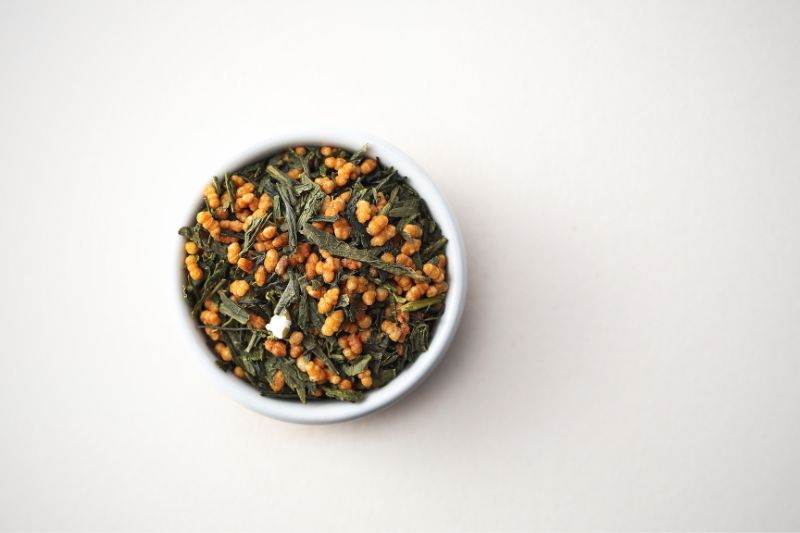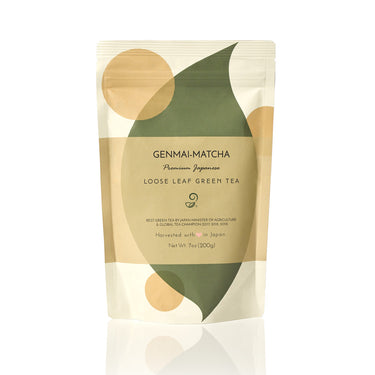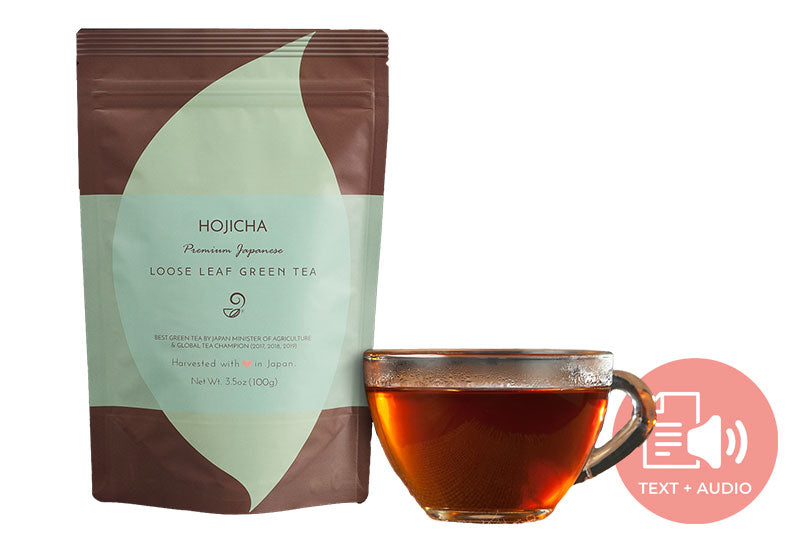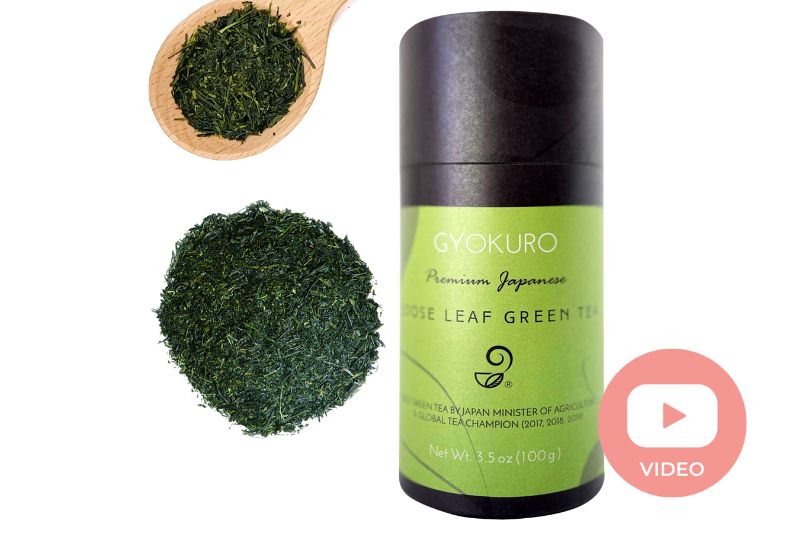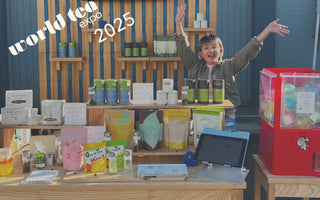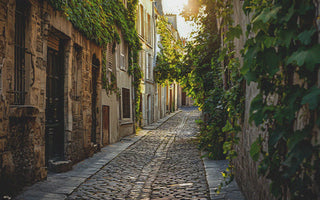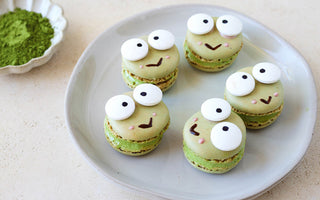People all over the world love genmaicha. This style of Japanese tea is unlike other teas for many reasons. It actually consists of green tea mixed with roasted brown rice.
Fans in Japan often refer to genmaicha green tea as popcorn tea. This tasty and interesting beverage gets its nickname from the popping sounds that can be heard during the roasting process. Roasted rice gives this drink a hearty, satisfying quality. This beverage receives high reviews among tea lovers due to its buttery, sweet flavor.

How to Make Genmaicha Tea At Home
If you want to get genmaicha online, you can get it from our online store here, but if you want to make your own, here are some simple instructions.
There's no need to travel to the tea houses of Tokyo in search of genmaicha if you have a craving for this beverage. It's actually possible to make this drink at home using your own ingredients. Are you wondering how to brew genmaicha tea at home in just a few minutes? Here's a step-by-step look at one of the simplest methods for making this treat in very little time:
- Sprinkle a thin layer of your favorite brown rice in a pan.
- Toast it until it has a dark color and a nutty aroma.
- Allow the rice to cool.
- Place your rice inside a sieve with leaves of sencha green tea.
- Add boiling water.
- Steep the mixture for approximately three minutes before transferring your drink to your favorite mug.
- Enjoy!
It's important to keep in mind that a teaspoon full of leaves will produce about one cup of genmaicha. In addition, you will need roughly one tablespoon of toasted rice to make one cup. You can adjust your ratios if you'll be serving multiple people. Genmaicha green tea that has been properly steeped will have a golden and brassy hue.
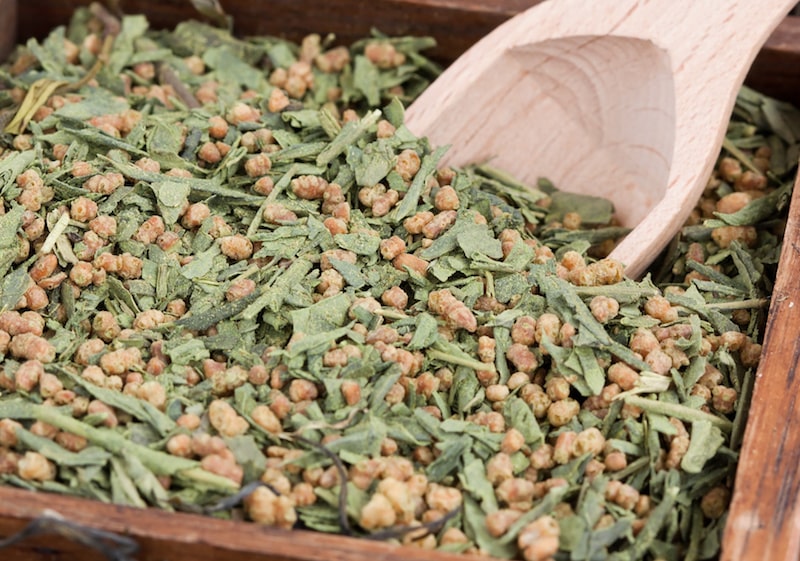
How Do You Store Genmaicha Green Tea?
Fresh genmaicha liquor isn't meant to be stored on a long-term basis. You should try to drink it the same day it is made. However, you can refrigerate your fresh genmaicha overnight. It is important to practice good storage methods for the green tea you intend to use when preparing genmaicha. Green tea should be placed in an airtight container once it has been opened. You should avoid storing the container in a place that experiences direct sunlight or warm temperatures. Tea that has been opened will generally stay fresh for up to six weeks. Click here to learn more about the best way to store tea

Why Do People Love Drinking Green Genmaicha?
What does genmaicha taste like? This green drink is rich and aromatic. The exact flavor you experience will depend on the type of green tea that is used. How does genmaicha taste when you make it using the standard recipe? The drink typically has a nutty flavor. Most reviews will tell you that this drink can offer a nice boost between meals if you're trying to avoid snacks. In fact, it is commonly used for weight loss.

A Quick Guide to Purchasing Genmaicha
Are you wondering where to buy Genmaicha? If you are in Japan, almost every tea room and tea shop throughout Japan sells brewed and packaged varieties of this drink. The list of the best spots to look for the beverage includes Kyoto Ippodo Tea, Horaido Tea Stall, and Arahataen. Many shops located within Kyoto's Nishiki Market area also sell this beverage. In addition, many vendors actually allow customers to place online orders for packaged blends that can be shipped internationally. Are you wondering how you can place orders for genuine Genmaicha products online? A company out of Kyoto called Nippon Cha ships its products around the world.
If you are in the USA, you can order quality Japanese genmaicha online with free shipping most of the time at the Japanese Green Tea Company. Their tea is from Arahataen, Shizuoka, and has won the national award multiple times.
Buying Genmaicha Online
Buying Genmaicha with Matcha Online
Looking for ones with matcha with Genmaicha? Click here for ones with matcha powder.
Get Free Bonus Books

Sign up for free to the Green Tea Club to get advice and exclusive articles about how to choose Japanese Tea, and tips, tricks, and recipes for enjoying Japanese tea.
About the author
Kei Nishida
Author, CEO Dream of Japan
Certification: PMP, BS in Computer Science
Education: Western Washington University
Kei Nishida is a passionate Japanese green tea connoisseur, writer, and the founder and CEO of Japanese Green Tea Co., a Dream of Japan Company.
Driven by a deep desire to share the rich flavors of his homeland, he established the only company that sources premium tea grown in nutrient-rich sugarcane soil—earning multiple Global Tea Champion awards.
Expanding his mission of introducing Japan’s finest to the world, Kei pioneered the launch of the first-ever Sumiyaki charcoal-roasted coffee through Japanese Coffee Co. He also brought the artistry of traditional Japanese craftsmanship to the global market by making katana-style handmade knives—crafted by a renowned katana maker—available outside Japan for the first time through Japanese Knife Co.
Kei’s journey continues as he uncovers and shares Japan’s hidden treasures with the world.
Learn more about Kei

